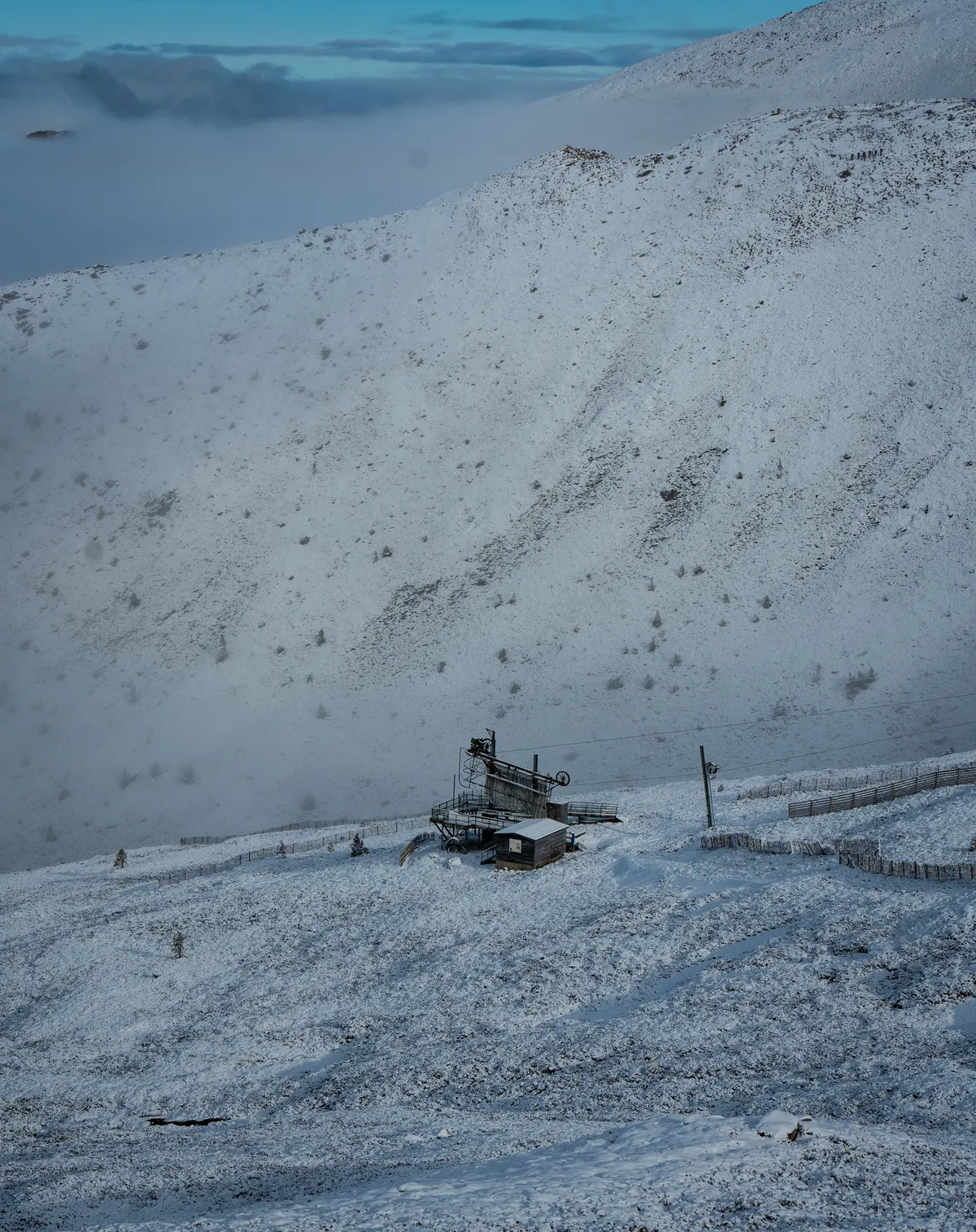
Winter Skills Course in the Cairngorms
So, after a few failed Munro summits due to our (read: my) inability to traverse up snowy peaks, we decided that one thing we’d love to do is a winter skills course.
After talking to my old university lecturer, he mentioned that his son-in-law was one of the folks running OceanVertical which specialized in a multi-day course designed to help us build up our skills and our confidence so that we could go off on our own with less of a chance of mountain rescue needing to be called out…
The course itself was hosted in the Cairngorms National Park. This is a fair distance north for us so we ended up camping in Glenmore Campsite not too far from the starting point.
At this point, we hadn’t had all that much experience of staying in the van for more than a single night at a time. We’d wild camped on New Year’s Eve and maybe had the odd other night in it, but this was very much pushing the boundaries a little bit further than we were used to.
The campsite itself was decent, with a couple of large shower/toilet blocks not too far from our pitch.
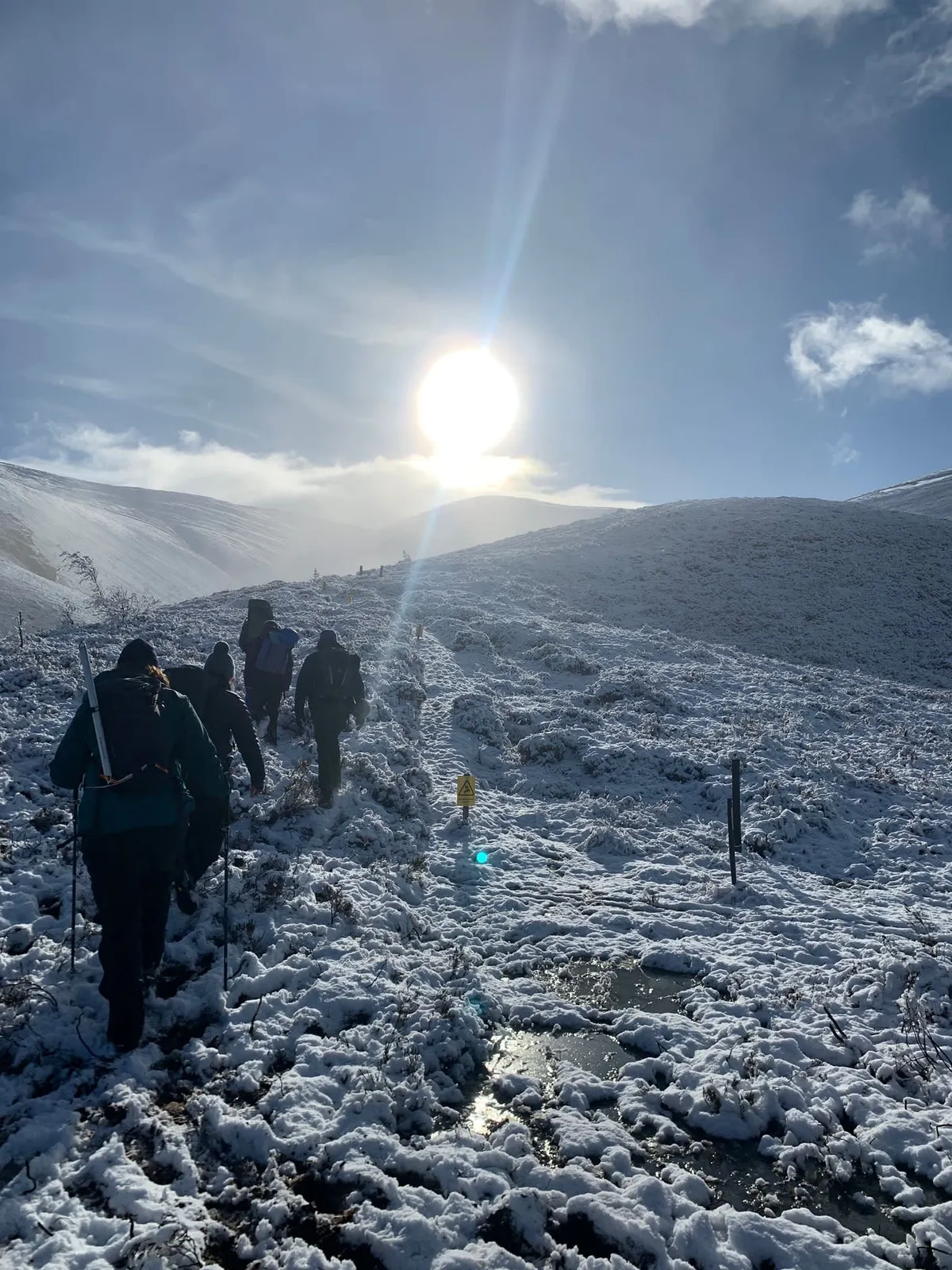
The first day of the course starts off with the group meeting at the Cairngorm carpark and the team dished out the gear we’d be using over the next two days and ensuring we were ready to hit the mountains. It’s an early start, so we obviously opted for a bag of jaffa cakes split between us as a make-shift breakfast.
Once we’d gotten all our gear sorted, we started heading up into the freshly coated mountains.

Now, our overall mountain fitness could have been better. I’ll hold my hands up and say we weren’t quite prepared for the pace and I wish we’d done a bit more prep work overall. We had to pause a few times just to catch our breath and let our calves recover from the brisk pace through the snow.

The goal for this section of the hike was to try and find a good solid patch of snow that was compact enough for us to learn some new skills. We continued on past the chairlift and eventually found a patch of snow that was perfect for our needs.
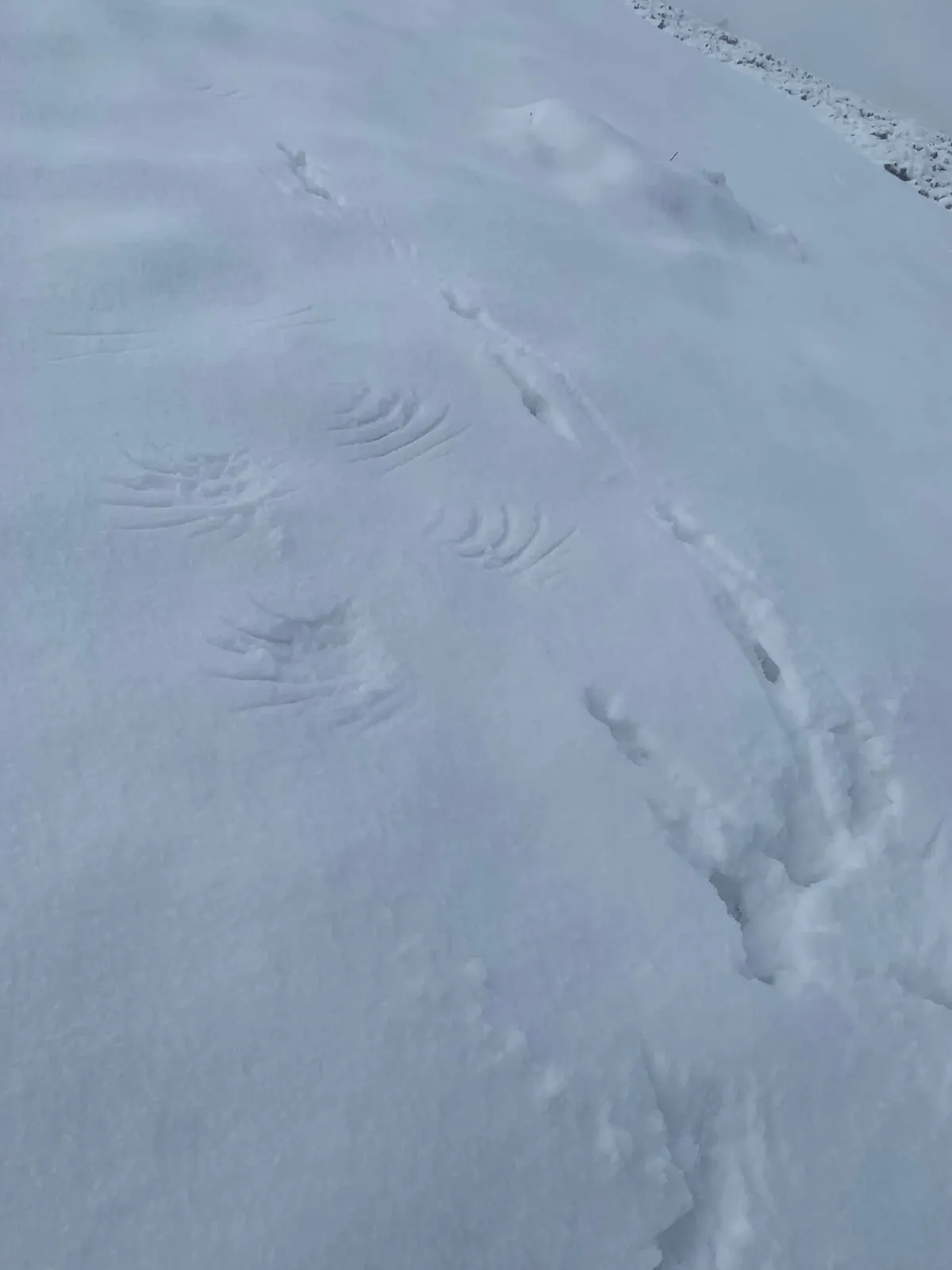
We started off with general practice of kicking in steps with the ragged outsides of our boots and then attempting to maintain the steps of those in front of us. This effectively built a staircase up the side of the mountain that allowed us to more easily make progress without crampons and without slipping.
Once we’d done that a few times and really nailed the technique, we moved onto testing out our crampons. Donning these was fairly straightforward, the boots we’d bought were ideal for crampons and it is incredible just how much extra grip and traction these give you on the compact snow.
This was a huge boost for my own confidence trying these out and being able to effectively run up and down incredibly steep snowy terrain with minimal fuss.

The final learnings of the day were focused on appropriate ice axe use and self-arrests if one of us took a tumble and started a slide.
We tried this a few times, taking turns to slide head-first down the slope and using our ice axe to arrest the slide and prevent us from going further. Truthfully, the snow wasn’t perfect for this scenario as it would typically prevent us from going fast enough to practice, but it gave us the general idea and allowed us to focus on technique.
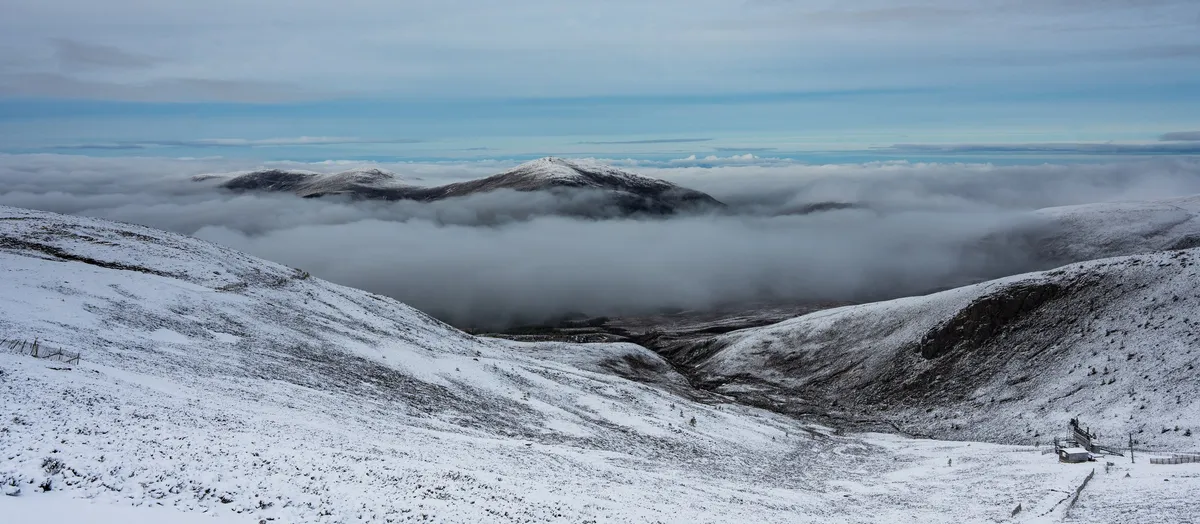
Day 1 concluded with a nice circular hike back down to the carpark.
Day 2 was a little bit more extreme in terms of the weather…
We’d grabbed some food from the bar in the Glenmore campsite the night before and had seen the forecast was giving wind gusts of up to 100mph at the peaks of the Munros we were looking to potentially summit.
Our group decided that it was worthwhile attempting heading up into the valley and using this as an opportunity to learn other survival skills.

The first skill we focused on was navigation and map reading - Stevie gave us some great explanations around how to read maps and how to estimate the time it’d take to travel over certain distances in certain conditions and depending on the elevation as well.
We also covered the topic of survival bags - effectively really small bags that can provide temporary shelter from the wind/rain/snow should you need it.
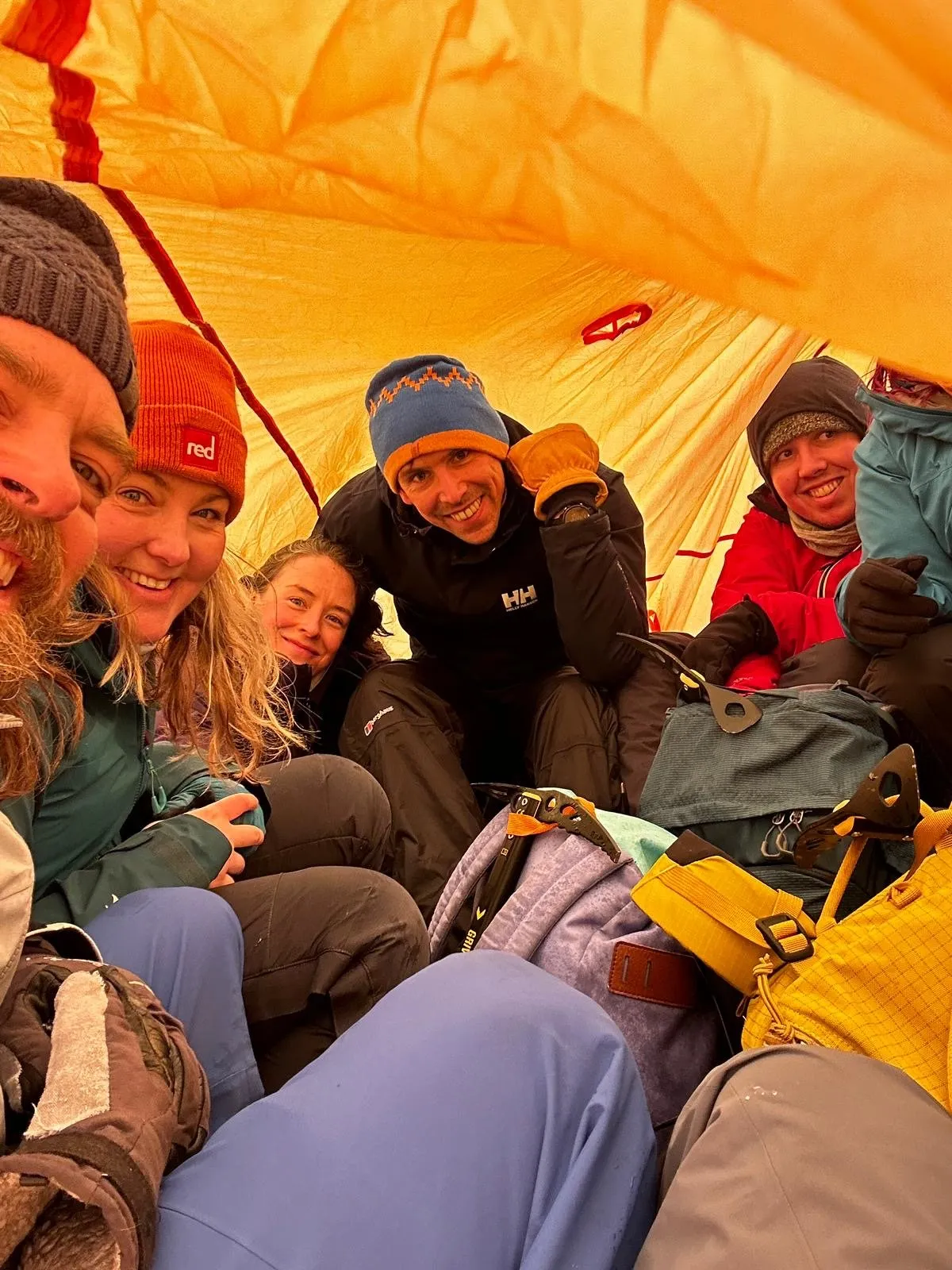
This was one key piece of gear we decided we’d immediately need to purchase after coming away from our trip. A 4-person tent is roughly £40 and it’s small enough that it can easily fit in our bags without too much bother!
We typically always carry this with us, that being said, we do need to make more of a habit of getting it out for when we’re having our sandwiches at the tops of some of our colder hikes.
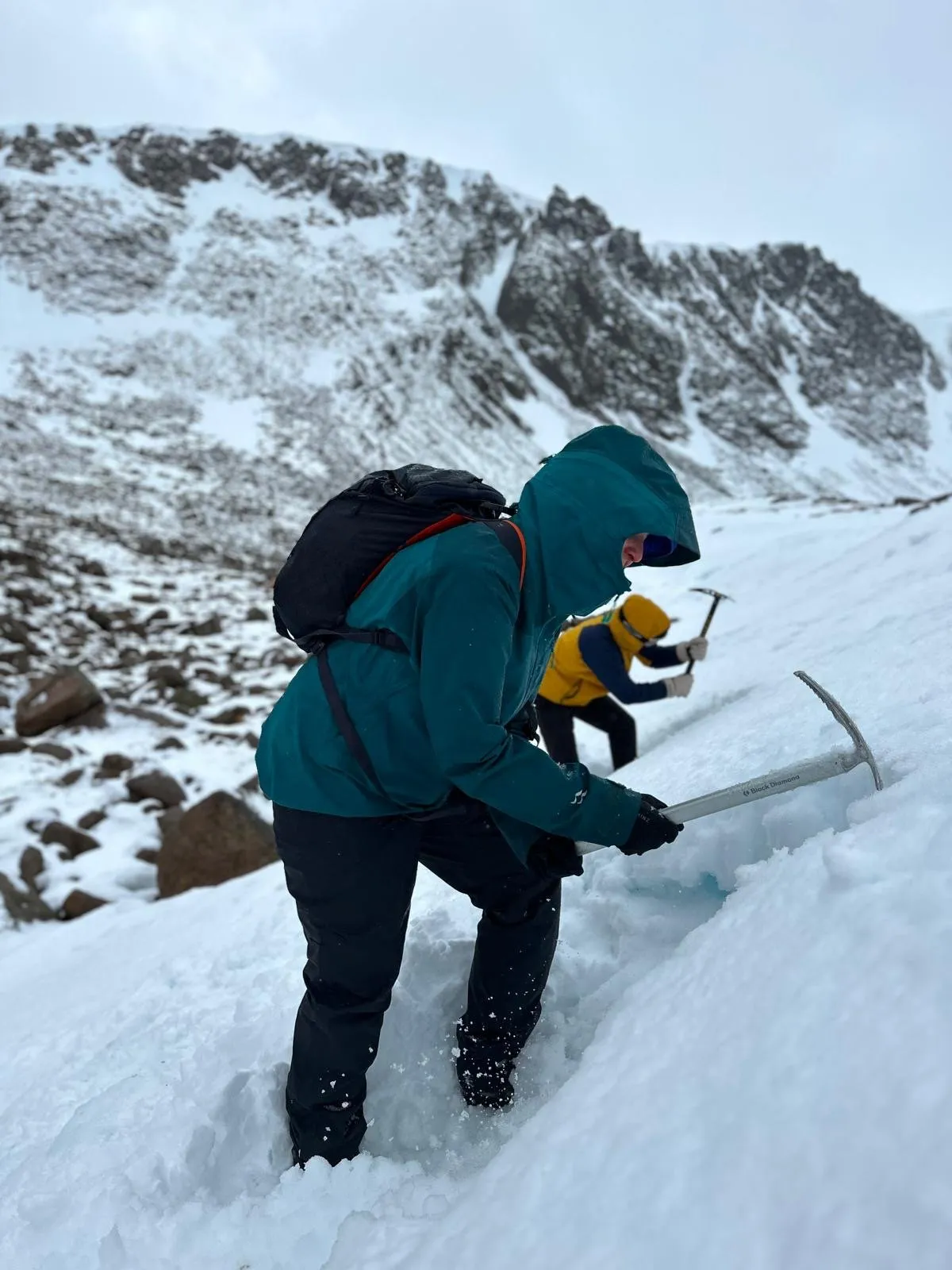
After a temporary break in our temporary shelter, we then moved on to creating bucket seats in the snow using our ice axes - this was a fun challenge and the high, bitingly-cold wind was certainly proving a point at how good these temporary cut-in seats can be at sheltering you from the worst of the cold.

After digging our seats into the snow, we then opted to head back down and homeware bound. The winds were starting to really pick up as time went on.
The winds were getting to the point where each step was becoming a little bit trickier. You’d swing your leg forward and the wind would take it across your body and out to the side…

At some point, we had to stop and pair up the smaller folk in the group with larger members who were better suited to handling the strong gusts. It was so strong that our tour-guide Stevie actually took a bit of a tumble into the group as we stood huddled for a moment.
We eventually made it to the slightly more sheltered path on the way back to the car park and towards the sanctuary of our van.
Overall, if you are wanting to learn the mountaineering skills needed to tackle some winter Munros, then I highly recommend OceanVertical’s 2 day course. We both learned a huge amount from both Mollie and Stevie and I’m really looking forward to putting all of these skills to the test this winter season!